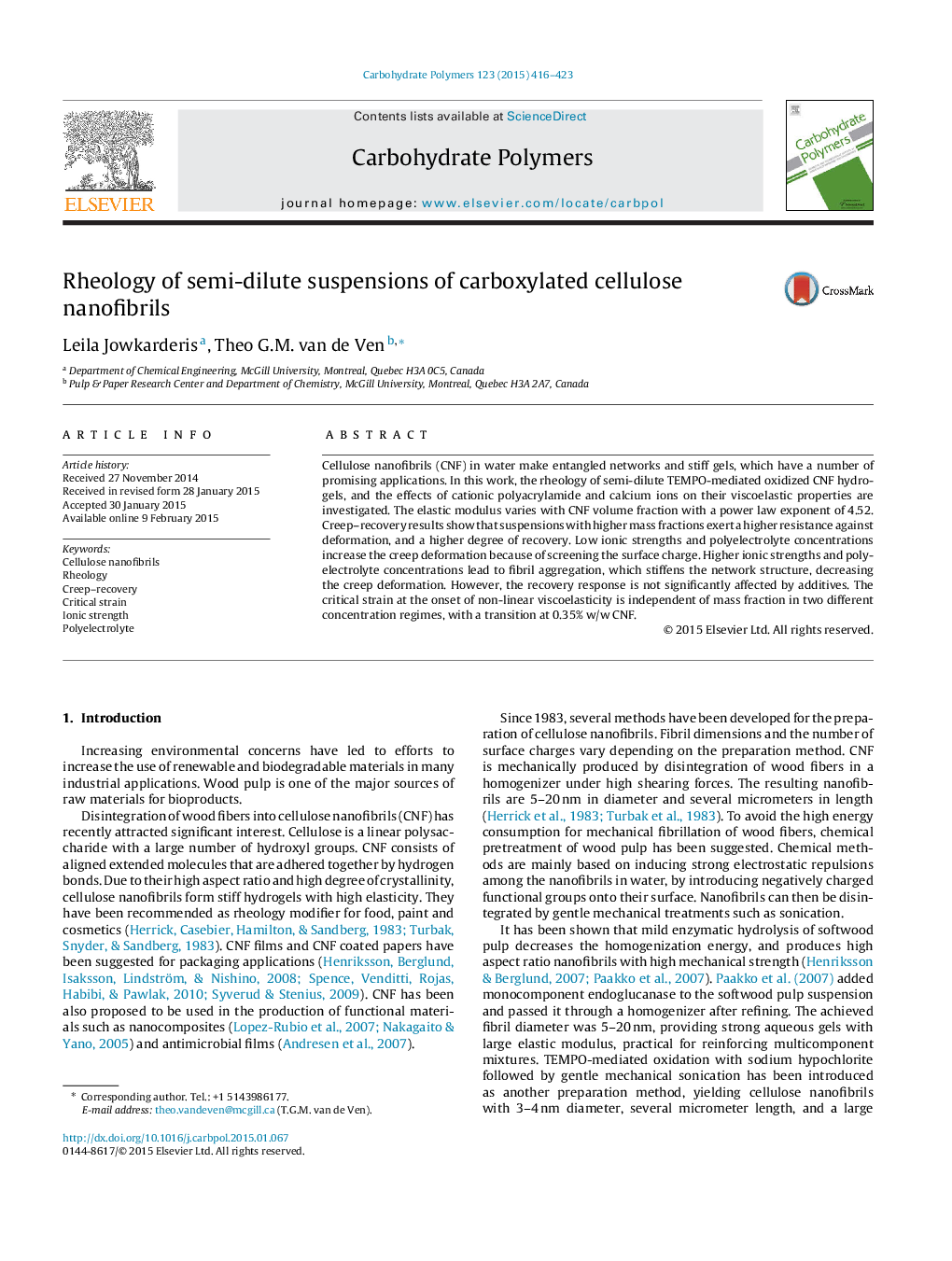| Article ID | Journal | Published Year | Pages | File Type |
|---|---|---|---|---|
| 7789154 | Carbohydrate Polymers | 2015 | 8 Pages |
Abstract
Cellulose nanofibrils (CNF) in water make entangled networks and stiff gels, which have a number of promising applications. In this work, the rheology of semi-dilute TEMPO-mediated oxidized CNF hydrogels, and the effects of cationic polyacrylamide and calcium ions on their viscoelastic properties are investigated. The elastic modulus varies with CNF volume fraction with a power law exponent of 4.52. Creep-recovery results show that suspensions with higher mass fractions exert a higher resistance against deformation, and a higher degree of recovery. Low ionic strengths and polyelectrolyte concentrations increase the creep deformation because of screening the surface charge. Higher ionic strengths and polyelectrolyte concentrations lead to fibril aggregation, which stiffens the network structure, decreasing the creep deformation. However, the recovery response is not significantly affected by additives. The critical strain at the onset of non-linear viscoelasticity is independent of mass fraction in two different concentration regimes, with a transition at 0.35% w/w CNF.
Related Topics
Physical Sciences and Engineering
Chemistry
Organic Chemistry
Authors
Leila Jowkarderis, Theo G.M. van de Ven,
